Fifty countries have now ratified a treaty banning nuclear weapons, which means it will become international law. The treaty, which is set to become active on January 22, passed even though most countries with nuclear weapons don’t like it.
Nuclear weapons – also known as atomic bombs – are some of the most deadly and dangerous weapons ever created. The explosion of a single nuclear bomb is enough to destroy a city.
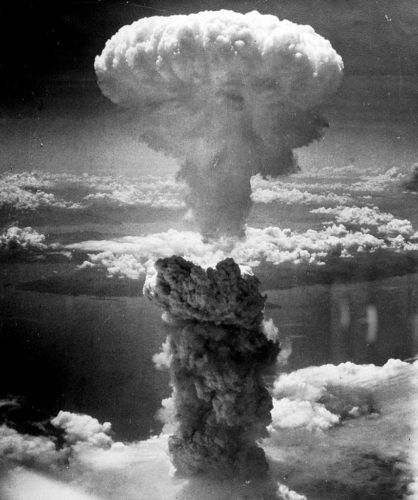
(Source: Charles Levy [Public Domain], via Wikimedia Commons.)
The effects of nuclear blasts go far beyond the damage and deaths they cause, affecting even survivors and people far away. Nuclear weapons release radioactive “fallout” – poisonous dust and ash, blasted into the sky, which spreads around the world, falling to earth later.
The US is the only country to ever use nuclear weapons in a war. In 1945, near the end of World War II, the US dropped atomic bombs on the Japanese cities of Hiroshima and Nagasaki, killing about 200,000 people, mainly civilians.
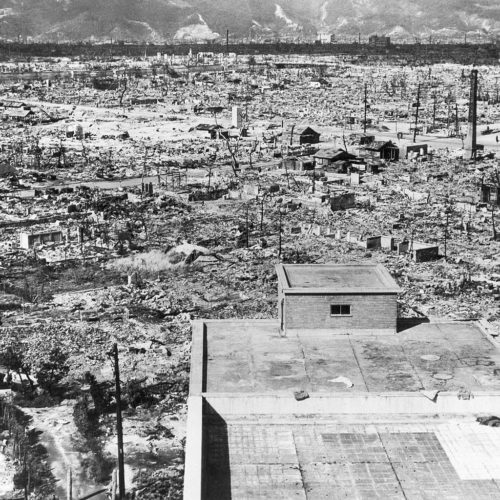
(Source: US government [Public Domain], via Wikimedia Commons.)
Around nine countries now have nuclear weapons: the US, Russia, the United Kingdom (UK), France, China, India, Pakistan, and North Korea. Israel is also believed to have nuclear weapons, but doesn’t admit it.
After World War II, there was a race to build weapons. The US, and the Soviet Union (now Russia*) built up huge supplies of nuclear weapons. The two sides set up complicated weapons systems targeting each other, each hoping to keep the other side from attacking first.
In 1970, a United Nations (UN) treaty called the “Non-Proliferation Treaty” (NPT) became law. This treaty was designed to prevent more countries from developing nuclear weapons, and to encourage “nuclear countries” to reduce the number of nuclear weapons they had.
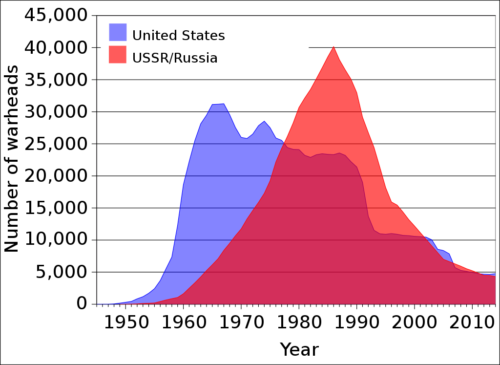
(Source: Fastfission [Public Domain], via Wikimedia Commons.)
Since the 1970s, the US and Russia* have made several agreements to reduce the number of nuclear weapons each side has. There has been progress, but some important agreements have ended or will run out soon. China isn’t part of those deals, and now has many more nuclear weapons than before.
The new agreement – the Treaty on the Prohibition of Nuclear Weapons (TPNW) – is much stronger than the NPT. It makes all nuclear weapons against the law, and bans using, developing, testing, having, or sharing the weapons.
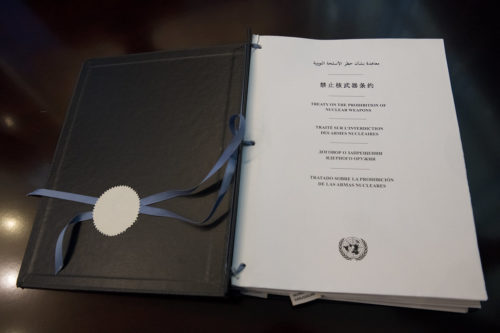
(Source: ICAN / Darren Ornitz Photography, via Flickr.com.)
A group call the International Campaign to Abolish Nuclear Weapons (ICAN), won the 2017 Nobel Peace Prize for getting the treaty started.
So far, 84 countries have agreed to the TPNW. On Saturday, Honduras became the 50th country to officially sign the treaty, which will now become law in 90 days. The other countries which have agreed to the TPNW are expected to ratify the agreement soon.
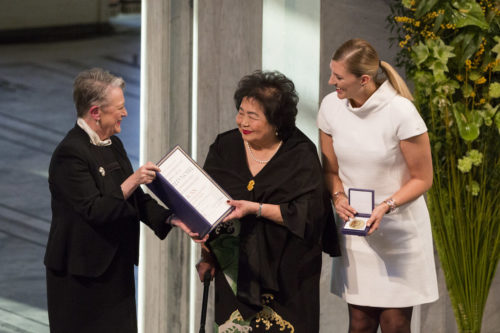
(Source: ICAN / Jo Straube, via Flickr.com.)
But the rules of the new treaty only apply to countries that sign it, and don’t affect countries that refuse to sign. ICAN and the UN believe that once the treaty becomes law, most countries will respond to the pressure and join the treaty sooner or later.
The US and other countries with nuclear powers are working against the treaty. The US and the UK say the NPT and other current treaties have better ways of making sure all sides reduce the number of nuclear weapons.
Did You Know…?
Kazakhstan and South Africa used to have nuclear weapons. Both countries have given them up and have now signed the TPNW.
* The Soviet Union (USSR) was made of Russia and many smaller countries. By 1991, the Soviet Union had broken up, though many of the smaller countries are still closely tied to Russia.
